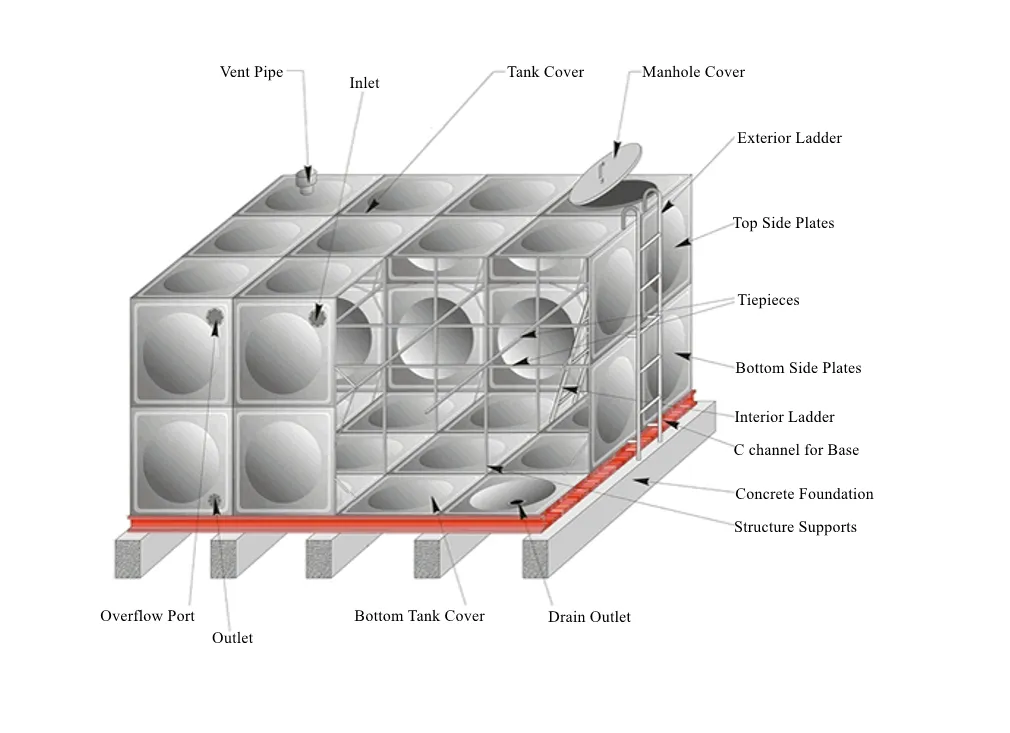loading...
- No. 9, Xingyuan South Street, Dongwaihuan Road, Zaoqiang County, Hengshui, Hebei, China
- admin@zjcomposites.com
- +86 15097380338
- Welcome to visit our website!
Innovative Applications and Benefits of FRP Piles in Modern Construction Techniques
Understanding FRP Piles A Sustainable Solution for Modern Construction
In recent years, the construction industry has begun to embrace innovative materials and methods to address environmental concerns and improve structural integrity. One of these advancements is the use of Fiber-Reinforced Polymer (FRP) piles. As a sustainable alternative to traditional concrete and steel piles, FRP piles offer several advantages that make them increasingly popular among engineers and builders.
What are FRP Piles?
Fiber-Reinforced Polymer piles are composite materials made from a polymer matrix reinforced with fibers, usually glass, carbon, or aramid. This unique combination results in a lightweight, durable, and corrosion-resistant material ideal for various applications, especially in harsh environmental conditions. FRP piles are designed to carry heavy loads while withstanding the challenges posed by moisture, chemicals, and biological agents, making them perfect for marine structures, foundations, and infrastructure projects.
The Advantages of FRP Piles
1. Corrosion Resistance One of the most significant benefits of FRP piles is their inherent resistance to corrosion. Unlike steel, which can corrode over time when exposed to moisture and other environmental factors, FRP piles maintain their structural integrity, resulting in extended service life and reduced maintenance costs.
2. Lightweight Design FRP piles are much lighter than conventional concrete or steel piles. This characteristic simplifies transportation and installation, allowing for faster project completion and reduced labor costs. The lightweight nature of FRP piles also means that less heavy equipment is required on-site, which further minimizes logistical challenges.
3. High Strength-to-Weight Ratio Despite their lightweight design, FRP piles exhibit a high strength-to-weight ratio. This property allows them to bear substantial loads and resist bending and buckling, making them suitable for various structural applications, including foundations for bridges, piers, and docks.
frp piles

4. Durability and Longevity The lifespan of FRP piles can significantly surpass that of traditional materials. Their resistance to environmental factors, such as water, salt, and chemicals, means they can last for decades without the need for replacement or extensive repair. This long lifespan contributes to a lower overall cost of ownership over time.
5. Environmental Sustainability As society becomes more aware of its environmental impact, using sustainable materials like FRP piles aligns with green building practices. FRP production generates less waste compared to traditional materials, and because they can be manufactured with recycled content, they reduce the consumption of raw materials. Additionally, their longevity and minimal maintenance contribute to a lower carbon footprint over their lifecycle.
Applications of FRP Piles
The versatility of FRP piles allows for various applications across multiple industries. In civil engineering, they are frequently used for marine structures, including docks, piers, and coastal defenses, where exposure to saltwater poses significant risks to material integrity. In transportation infrastructure, FRP piles serve as foundations for bridges and elevated roadways, providing a strong platform that withstands heavy traffic loads.
Moreover, FRP piles are increasingly utilized in environmental restoration projects, such as wetlands and riverbank stabilization efforts. Their eco-friendly properties and ability to integrate seamlessly into natural landscapes make them ideal for projects focused on sustainability.
Conclusion
As the construction industry continues to evolve, the adoption of innovative materials such as FRP piles marks a step forward towards more sustainable building practices. With their numerous benefits, including corrosion resistance, lightweight design, high strength, durability, and environmental sustainability, FRP piles provide a compelling alternative to traditional construction methods.
The shift towards these advanced composite materials not only enhances structural performance but also contributes to the growing movement toward greener construction practices. As more engineers and builders recognize the advantages of FRP technology, it is likely that FRP piles will play an increasingly prominent role in shaping the future of infrastructure development. The integration of such sustainable solutions promises to revolutionize how we approach construction, emphasizing longevity and environmental responsibility in the years to come.
-
The Rise of FRP Profiles: Strong, Lightweight, and Built to LastNewsJul.14,2025
-
SMC Panel Tanks: A Modern Water Storage Solution for All EnvironmentsNewsJul.14,2025
-
GRP Grating: A Modern Solution for Safe and Durable Access SystemsNewsJul.14,2025
-
Galvanized Steel Water Tanks: Durable, Reliable, and Ready for UseNewsJul.14,2025
-
FRP Mini Mesh Grating: The Safer, Smarter Flooring SolutionNewsJul.14,2025
-
Exploring FRP Vessels: Durable Solutions for Modern Fluid HandlingNewsJul.14,2025
-
GRP Structures: The Future of Lightweight, High-Performance EngineeringNewsJun.20,2025
